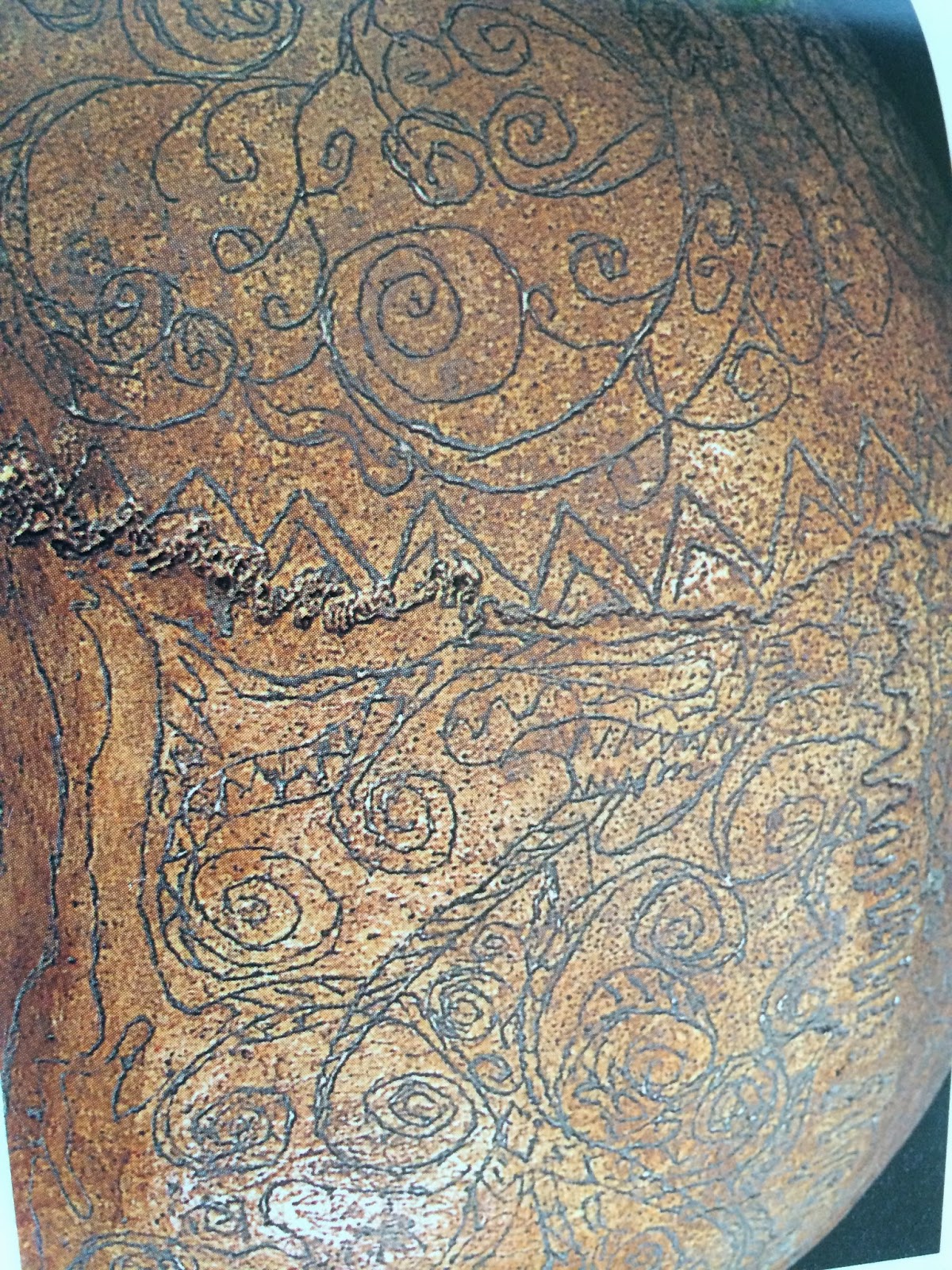ACM has a fascinating exhibition showcasing Batak tribal art with an intriguing title
‘Beginning of the Becoming’ and it
comes from one of the names of the supreme God of the Batak - Mula Jadi ni bolon. Batak is a
collective word for the indigenous people who live in Northern Sumatra,
Indonesia. There are six diverse groups that make up the Batak today.
 |
| Lake Toba in Northern Sumatra |
A scenic crater lake called Lake Toba, is believed by many (but not all) Batak to be
the birthplace of their people and therefore considered sacred. For centuries, they had successfully protected
their lands from outsiders, guarding the passes to the villages and also exaggerating
stories of head-hunting and cannibalism. No outsider has witnessed these
rituals (…or lived to tell about them) so we have no way of knowing if the wild
rumours were true. It was not until the 18th CE that accounts of the
Batak came from Dutch merchants and Christian missionaries.
Since the
early 20th CE, many Batak have been converting to either Christianity or
Islam, with mass conversion around WWII in the 1940's. Due to this, a lot of
the beliefs and the traditional way of life is now lost and the
current generation doesn’t associate with many artifacts in this exhibition. Most
of the information we know is based on accounts from western anthropologists
or missionaries.
In this
post, I will write about their old religion from the pre-colonial times,
focusing only on ancestor worship. Batak
believe in three realms or worlds – upper world which is inhabited by the gods
and ancestors, the lower world where bad spirits live and sandwiched between
these is the middle world were humans reside alongside spirits. So basically,
spirits were all around with the ability to bestow blessings or create havoc to
the living.
Bataks were ancestor
worshippers with many rituals surrounding this belief. Fetishes* of ancestors were carved and rituals were performed in order to receive their blessings and coorporation.
 |
| Fig 1: Debata idup (ancestor figures). Toba Batak, 19 CE. ACM collection |
In fig 1, we see a pair of ancestors– one
male, one female- all dressed in their finery. They are called living
gods or debata idup (like many words in the Batak language, the word debata
comes from Sanskrit ‘devata’ meaning divinity or demigod). They represent
either the founding couple or important couple of a clan or village. Not everyone who passed away became an
ancestor. Since there was a hierarchy in the spirit world, it is only people who
were important and has a good status in society that made it to the upper world
after death...and proper funeral rights were absolutely essential.
Because ancestors
were worshiped, they would have been placed in an altar in the oldest clan house,
just below the roof since this is the most
sacred spot in a house and they would
be clothed as a sign of respect. These ancestors have been wrapped in many layers of fabric and one even has a few white beads sewn on it.
To appreciate the stylistic features of these fetishes, we have to see
them undressed. Luckily for us, most of the fabric covering them has been lost,
probably disintegrated due to its fragile nature.
 |
| Fig 2: Debata idup/ Ancestor figures. Toba Batak, 19 CE. Mandala foundation. |
Fig 3: Debata idup/ Ancestor figures. Toba Batak, Late 19 CE. Mandala foundation.
Here we have some ancestor figures with their hands in the classic posture –
the arms are on the side of the body and the hands by the navel, often in a diamond shape (fig 3). Their legs are
together and bent at the knees.
In most Batak fetishes, the feet are rarely fashioned and often are just stumps (fig 2), probably because
their torso and feet were mostly covered with fabric. The ancestors in fig 3 look more realistic and have toes, which is very rare, and the stomps at the bottom were probably used to peg them into a wooden altar.
These fetishes are all made of wood but over time, the color has changed to a beautiful,
black shining patina. This is due to exposure to cooking smoke inside the house (Batak traditional houses have poor ventilation and have a cooking pot going almost the entire day) and from being
regularly handled during rituals.
 |
| Fig 4: Debata idup/Ancestor figures. Toba or pakpak-dairi. 19 CE. ACM collection |
Fig 4 shows ancestors that are placed together onto a stump which is covered with palm fiber tied in a spiral pattern, notice the mohawk on the male's head.
Ancestor figures were once considered heirlooms to be passed down from one generation to the next, but sadly many fetishes were either burned during conversion to Christianity or Islam; or many were sold to collectors’ decades ago.
*Fetish = inanimate object that is worshipped for its magical powers or because it is inhabited by a spirit |















